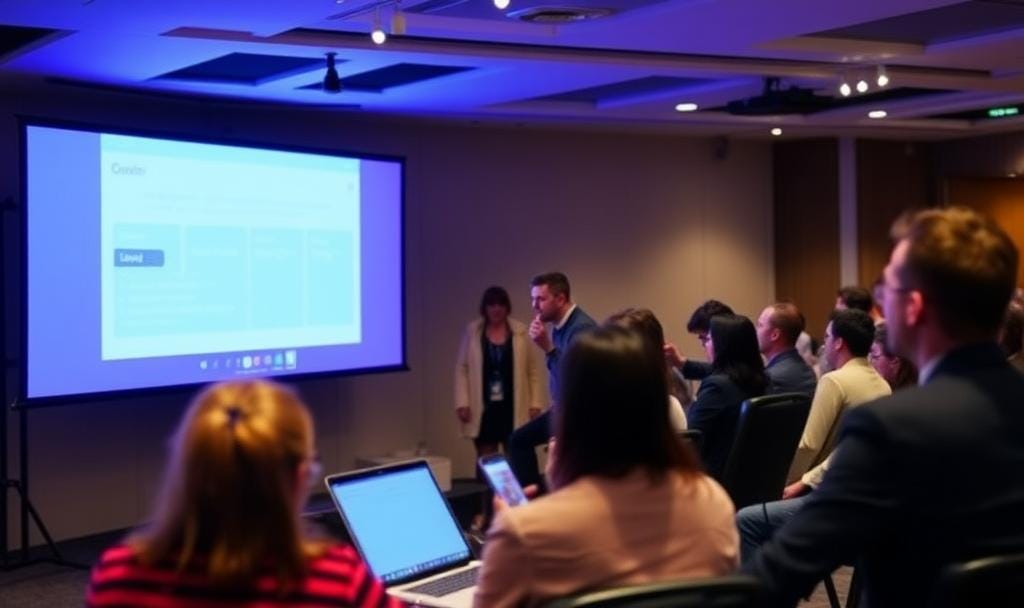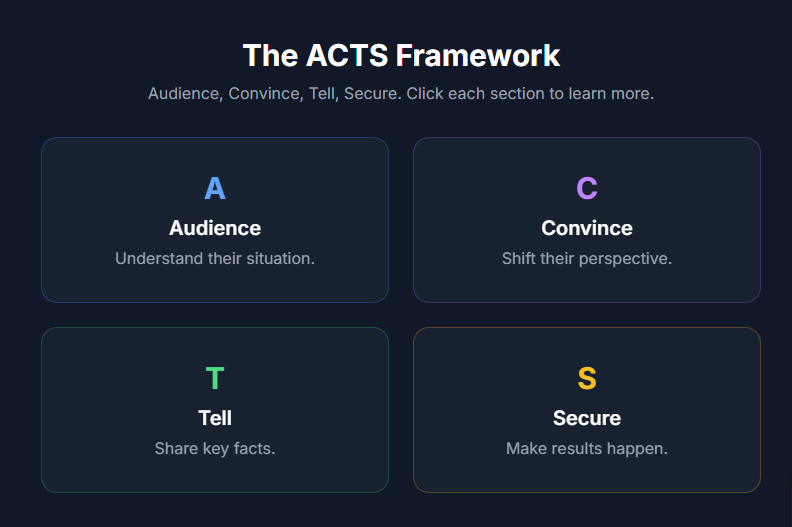ACTS Framework: Crafting Talks and Proposals That Land
How to keep talks, proposals, and even quick stakeholder updates focused, memorable, and—most importantly—effective.
If you’ve ever sat through a presentation that sounded good but left you wondering, so what?—you know how easy it is for talks and proposals to miss the mark.
As the steering committee track lead for the upcoming MLOps World conference this October, and a community organizer for the MLOps community in Austin, I’ve had the privilege to review and curate hundreds of talk abstracts, proposals, and presentations for major industry events and local meetups. This vantage point has taught me that truly compelling talks are defined by just three things: clarity, connection, and action.
The challenge isn’t effort—it’s structure. Even the smartest ideas struggle without a clear path from audience needs to actionable next steps.
Over time, I distilled the key aspects into one playbook: the ACTS Framework. This method keeps talks, proposals, and even quick stakeholder updates focused, memorable, and—most importantly—effective.
Click on the image to see the interactive infographic using Google Gemini.
What is the ACTS Framework?
The ACTS Framework is a four-step method for shaping any talk, pitch, or proposal around what actually matters: your audience, their journey, and the actions you want them to take.
It breaks down into four parts:
A — Audience
Start by meeting people where they are. What’s their current situation or mindset? What’s changing in their world, and why should they even care about what you’re presenting?
C — Convince
Paint the picture of where they could be instead. Share opportunities, success stories, or proof points that build trust in your idea. This is your chance to make them believe.
T — Tell
Now comes the detail. Share the facts, data, or a demo that makes your proposed solution real. But keep it crisp—highlight only what they need to truly understand, not everything you’ve researched.
S — Secure
Every talk should end with an ask. Do you want approval, feedback, a pilot, or a commitment? Be specific, actionable, and clear so your audience knows exactly how to respond.
How to Structure a Talk with ACTS
Think of ACTS as a flow rather than a checklist. Here’s how it plays out in a presentation narrative:
Initiative Name – Give context with a clear title.
Audience – Share the challenge or shift they’re facing. “Why are we here, and why now?”
Convince – Back up your point with market trends, data, or anecdotes. Build trust by showing what makes your approach different.
Tell – Make it real: demos, visuals, testimonials, or prototypes. This is where your idea comes alive.
Secure – Showcase potential outcomes (ROI, efficiency, trust, engagement). End with a concrete call-to-action—something they can say “yes” to today.
Slide/Meeting Template Example
Here’s a working structure you can adapt directly:
[Initiative Name]
Audience: [Business challenge/opportunity]
Convince:
Influencing Factor 1: [Statistic or trend]
Influencing Factor 2: [Customer insight/differentiator]
Why our approach is unique: [Clear differentiator]
Tell: [Demo, screenshots, or story]
Secure:
Engagement: [metric]
ROI: [metric]
Efficiency: [metric]
Trust: [metric or testimonial]
Attrition: [metric]
Ask: [Approve, pilot, or feedback]

Pro Tips for Using ACTS
Define your victory condition up front:
“If by the end of this session you agree to [next step], then we’ve won.”Stay audience-first:
Anchor everything back to “What’s in it for them?”Tell stories visually:
Replace paragraphs with infographics, short anecdotes, or demos.Quantify outcomes:
Translate impact into numbers your audience already cares about.
Why ACTS Works
Most talks fail because they start in the middle—with data, product walkthroughs, or features. ACTS forces you to start where the audience is and guide them—step by step—toward action.
It’s not just a framework for slides. It’s a discipline for thinking through any communication: proposals, pitches, customer workshops, even conference talks.
When you ACTS, you don’t just share ideas. You secure outcomes.



